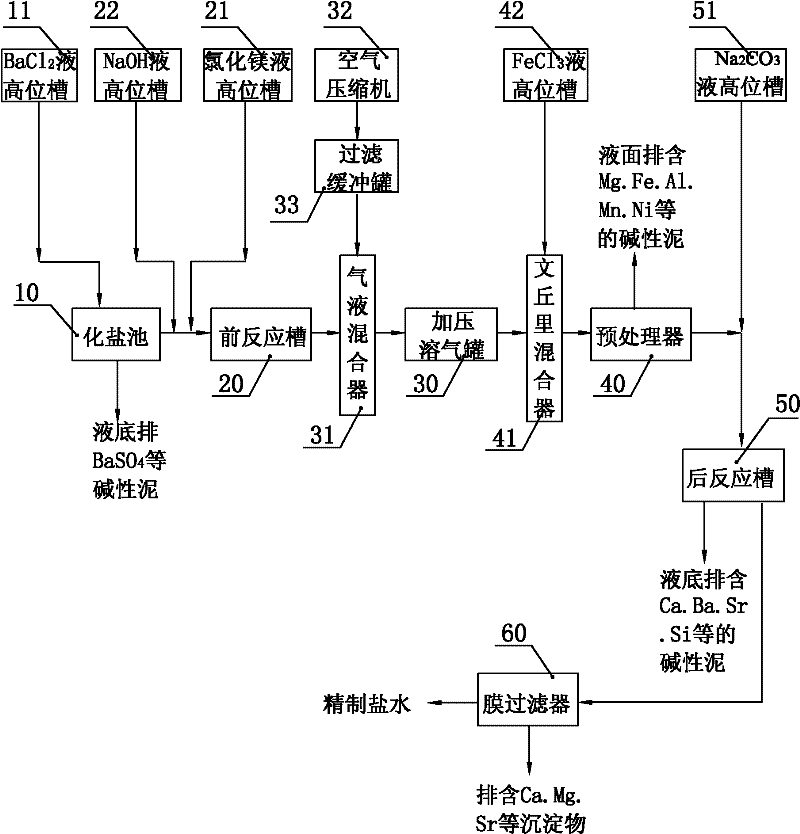Method and system for refining crude brine
A refining method and refining system technology are applied in the field of chlor-alkali salt and its preparation process and equipment system, which can solve the problems of high price of adsorption equipment, huge daily consumption of raw salt, difficult transportation of sea salt, etc. Safe production, excellent and stable brine quality, and the effect of broadening the selection range
- Summary
- Abstract
- Description
- Claims
- Application Information
AI Technical Summary
Problems solved by technology
Method used
Image
Examples
Embodiment Construction
[0059] Embodiment of the refining system of the present invention:
[0060] Such as figure 1 , which is a schematic diagram of the structure of the embodiment of the refining system using the above-mentioned crude brine refining method and its refining and impurity removal links. This embodiment of the refining system includes sequentially connected: a salt tank 10, a front reaction tank 20, a pressurized gas solution tank 30, a preprocessor 40, a rear reaction tank 50, and a membrane filter 60;
[0061] Also be provided with BaCl on the said chemical salt pond 10 2 Head tank 11 of the solution and its infusion pipe, from which BaSO is removed from the bottom 4 and other sedimentation; a baffle type settling tank (not shown) is also connected in series between the outlet of the salt salt tank 10 and the inlet of the front reaction tank 20.
[0062] The inlet of the front reaction tank 20 is also connected with the output pipe of the magnesium chloride solution head tank 21 ...
PUM
| Property | Measurement | Unit |
|---|---|---|
| concentration | aaaaa | aaaaa |
Abstract
Description
Claims
Application Information
 Login to View More
Login to View More - R&D
- Intellectual Property
- Life Sciences
- Materials
- Tech Scout
- Unparalleled Data Quality
- Higher Quality Content
- 60% Fewer Hallucinations
Browse by: Latest US Patents, China's latest patents, Technical Efficacy Thesaurus, Application Domain, Technology Topic, Popular Technical Reports.
© 2025 PatSnap. All rights reserved.Legal|Privacy policy|Modern Slavery Act Transparency Statement|Sitemap|About US| Contact US: help@patsnap.com



